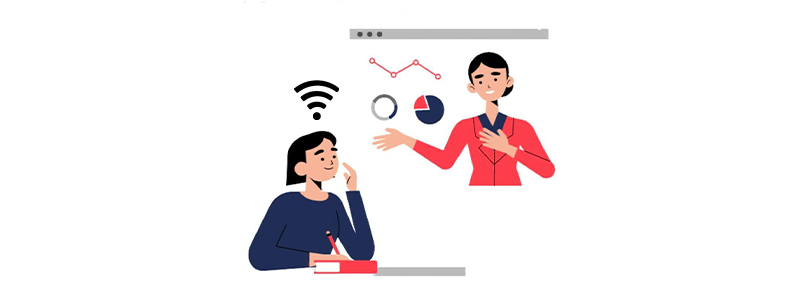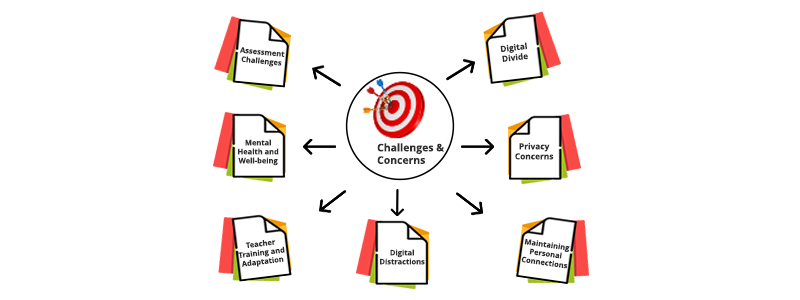The relationship between teachers and students has long been regarded as a cornerstone of education. However, as we venture further into the 21st century, this dynamic relationship is undergoing a profound transformation. Technological advancements, changes in pedagogical approaches, and shifting societal norms are redefining how teachers and students interact in the digital world. This article will limelight the multifaceted aspects of this evolution and its impact on education.

Technology as a Catalyst for education
One of the most significant drivers of change in teacher-student interaction is technology. The proliferation of digital tools, online platforms, and virtual learning environments has opened up new avenues for communication. The traditional classroom, with its one-dimensional flow of information from teacher to student, is giving way to a more dynamic and interactive model.
The COVID-19 pandemic accelerated the adoption of online learning, forcing educators to adapt quickly. Virtual classrooms, video conferencing, and learning management systems have allowed teachers and students to connect beyond geographical boundaries. This has made education more accessible and flexible. Technology enables personalized learning experiences, with adaptive software and analytics helping teachers tailor their instruction to individual student needs. This fosters a more one-on-one relationship, even in larger classes.
Shifting Roles and Responsibilities
The evolving landscape of teacher-student interaction is also marked by a change in the roles and responsibilities of both parties. Digital education encourages students to be active participants in their learning journey. Rather than passively absorbing information, they are expected to engage critically, ask questions, and seek answers independently. This shift has made education more student-centered, with teachers acting as guides and facilitators.
In this new paradigm, teachers take on the role of mentors and facilitators, they are no longer just disseminators of knowledge but guides who help students navigate the vast sea of knowledge available online. As a part of this both teacher and student get a new facelift in which guidance, support, and encouragement are provided, fostering more collaborative learning.
Communication Beyond the Classroom
The boundaries of teacher-student interaction are extending beyond the physical or virtual classroom, in which both get connected through social media platforms and communication apps. This informal interaction can help build rapport, address concerns, and provide a space for students to seek guidance outside of class.
Diversity and Inclusion
The modern educational landscape places a strong emphasis on diversity and inclusion, which has a direct impact on teacher-student interaction. Teachers are increasingly mindful of cultural differences and the need for inclusive teaching practices. This kind of awareness promotes a more respectful and empathetic interaction with students from diverse backgrounds. Special education and inclusive classrooms mean that teachers adapt their teaching methods to meet the ever-growing needs of every student, further emphasizing the importance of personalized interaction.
Challenges and Concerns

While the evolving landscape of teacher-student interaction offers numerous benefits, it is not without its challenges.
a) Digital Divide: One of the most pressing concerns is the digital divide. While technology has expanded access to education, not all students have equal access to the necessary devices and internet connectivity. This divide can exacerbate existing inequalities in education, as students without access to technology may miss out on valuable online resources, discussions, and interactions.
b) Privacy Concerns: The use of online platforms for communication raises concerns about student privacy and data security.
c) Maintaining Personal Connections: While technology enhances communication, it can also erode the personal connections that are crucial in education. Face-to-face interactions in the classroom provide valuable non-verbal cues and opportunities for spontaneous discussions.
d) Digital Distractions: The same technology that facilitates learning can also be a source of distraction. Smartphones, social media, and other digital distractions can compete for students' attention during class or while studying.
e) Teacher Training and Adaptation: Teachers often face the challenge of adapting to rapidly evolving technology and teaching methods. Professional development and training are essential to ensure that educators are proficient in using digital tools and can effectively integrate them into their teaching.
f) Mental Health and Well-being: The modern world's fast-paced, technology-driven environment can contribute to stress and mental health issues among students. Additionally, the blurred lines between school and personal life due to digital communication can lead to burnout among teachers.
g) Assessment Challenges: Assessing students in a technology-driven environment can be challenging. Teachers must consider issues of cheating, plagiarism, and the reliability of online assessments. Finding fair and effective ways to assess students' understanding and skills in an online or blended learning environment is an ongoing concern.
However, in this challenging era, ICT Academy, a non-profit organization, aims to train higher education instructors and students in order to produce instructors of the future and graduates who are prepared for the employment, innovation, entrepreneurship and leadership.
Conclusion
The evolving landscape of teacher-student interaction in the modern world is a reflection of broader societal changes, technological advancements, and pedagogical innovations. While it brings exciting opportunities for personalized learning, inclusivity, and mentorship, it also presents challenges that must be addressed.